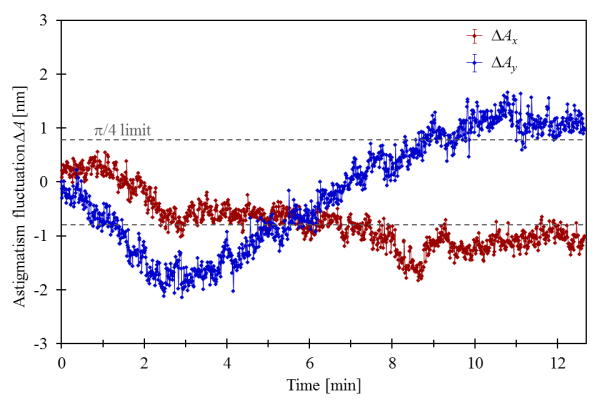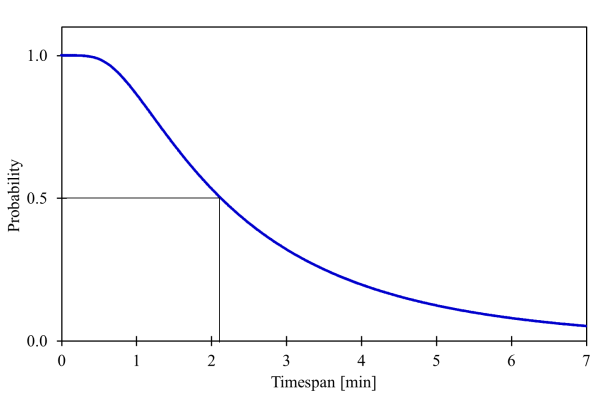IT-2-P-1633 Lifetime of the aberration-corrected optical state in HRTEM
The technique of high-resolution transmission electron microscopy (HRTEM) experienced an unprecedented progress through the introduction of hardware aberration correctors, and by the improvement of the achievable resolution to the sub-Ångström level. As a consequence, the required precision level to measure and to adjust the optical properties of transmission electron microscopes has become increasingly demanding. A second consequence of this development, which has received little attention so far, is that aberration correction at a given resolution requires additionally a well-defined amount of optical stability. We investigate the qualification of a variety of high-resolution electron microscopes to maintain an aberration-corrected optical state in terms of a lifetime.
A comprehensive statistical framework is introduced for the estimation of the optical lifetime [1]. The temporal evolution of the twofold astigmatism is extracted from a series of images recorded over several minutes (Fig. 1). The twofold astigmatism serves as representative indicator for the optical stability since it is one of the most volatile image aberrations, has a strong influence on the image contrast, and can be measured rapidly in a simple experiment [2]. A model-based evaluation method was developed, which allows us to distinguish between two major components of astigmatism fluctuations, a random walk and a constant drift. A very useful output of the model-based evaluation is a probability curve (Fig. 2), which informs the operator about the chance to still work in an aberration-corrected state after a given timespan.
Optical stability evaluations for different high-resolution microscopes reveal surprisingly short lifetimes on the order of a few seconds up to a few minutes. The observed short lifetimes denote a critical limitation of the timespans between aberration measurement, aberration correction and the actual imaging. Therefore further investigations and technical developments are necessary in order to stabilize electron microscopes with respect to their sub-Ångström qualification. Since the topic of optical stability turns out to be of similar importance as the topic of resolution itself, we recommend to include a routine assessment of the optical stability in acceptance tests for high-resolution microscopes operating in the discussed resolution regime. For this purpose, the lifetime evaluation procedures developed in this work have been implemented in a user friendly and freely downloadable software [3].
References:
[1] J. Barthel, A. Thust, Ultramicroscopy 134 (2013), p. 6.
[2] J. Barthel, A. Thust, Ultramicroscopy 111 (2010), p. 27.
[3] J. Barthel, http://www.er-c.org/barthel/pantarhei/, (Feb 2014).
J.B. gratefully acknowledges funding within the core facilities initiative of the German Science Foundation (DFG) under the grant number MA 1280/40-1.

